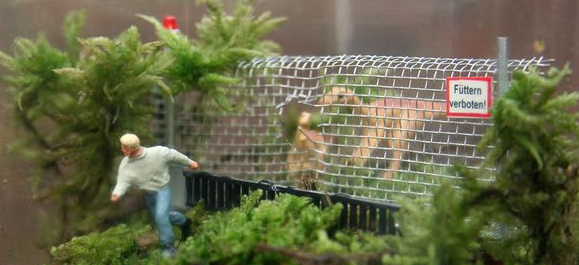…Somebody “pulled the Negro out of the car by his belt.”
The drivers “hit him several times with their fists and knocked him to the ground.”
One of the drivers pulled out a knife. “Before you kill him,” he said, “I want to put the same scars on him that he put on Brown.” Said Jessie Lee Sammons: “I could hear the tearing of clothing and flesh.”
Then the drivers “beat the side of his head with a shotgun.” Said Marvin H. Flemming’s statement: “I could hear some licks like they were pounding on him with the butt end of a gun. I heard the Negro say, ‘Lord, you done killed me.’ ” Finally, said Charlie Covington, he heard Roosevelt Carlos Hurd Sr., a Blue Bird cab driver, cry out: “Give me the gun and let’s get this over with.” Just then, “a tall, slender boy with bushy hair hit the Negro in the mouth and knocked him down. The Negro started to get up when Mr. Hurd took the shotgun. He shot the Negro in the head. He unloaded the gun and called for more shells…Mr. Hurd shot the Negro two more times.”
The tissue of Willie Earle’s brain was left hanging on the bushes. The lynchers went back to Greenville and drank coffee… from Time, June 1947.

White Mob Lynches Willie Earle Near Greenville, South Carolina
On February 17, 1947, Willie Earle, a 24-year-old African American man, was being held in the Pickens County Jail in South Carolina on charges of assaulting a white taxi cab driver. A mob of white men – mostly taxi cab drivers – seized Mr. Earle from the jail, took him to a deserted country road near Greenville, brutally beat him with guns and knives, and then shot him to death.
Regarding The Lynching Of Willie Earle.
Yellow Cab driver Thomas W. Brown, a disabled veteran, had picked up a fare — at least one black male, by varying accounts — at about 9 p.m. on Markley Street for a run to the Liberty area in Pickens County, according to a 2003 analysis conducted by The Greenville News, which obtained FBI and local police investigation files. An hour later, Brown had been found alongside the old Liberty-Pickens road, bleeding after being robbed and stabbed three times. Police said footprints led from where Brown was found to the dilapidated Earle house a mile away, where police said they found some of the money taken from Brown and a bloodstained jacket and knife.
Shortly before dawn, Brown lay dying in a hospital as the group — all but three of them taxi drivers — decided to take Earle from the Pickens County jail after his arrest in Brown’s killing. The taxi drivers’ anger swelled at the West Court Street taxi office and cafe that faced each other behind the courthouse, a building that stands today near City Hall and the Westin Poinsett Hotel and was also the theater where the drivers’ trial would play out on an international stage. They assembled at the Saluda River Bridge on what is now State 124.
A Pickens County jailer said he awoke to find a mob of men wearing mostly taxi driver caps and pointing guns at him with a demand to hand over Earle, which he did. An hour later, a black funeral home in Greenville received an anonymous call alerting where a body could be found on Bramlett Road, at the time an isolated, unpaved road. The 24-year-old Earle had been beaten and shot in the head with a shotgun.
An hour later, a black funeral home in Greenville received an anonymous call alerting where a body could be found on Bramlett Road, at the time an isolated, unpaved road. The 24-year-old Earle had been beaten and shot in the head with a shotgun.
When arrested, twenty-six of the thirty-one defendants gave full statements admitting participation in Mr. Earle’s death. As the trial began, Judge J. Robert Martin warned that he would “not allow racial issues to be injected in this case.”
During the 10-day trial, the defendants chewed gum and chuckled each time the victim was mentioned.
The defense did not present any witnesses or evidence to rebut the confessions and instead blamed “northern interference” for bringing the case to trial at all.
At one point, the defense attorney likened Mr. Earle to a “mad dog” that deserved killing, and the mostly white spectators laughed in support.
The judge ruled that 26 confessions, each of them pointing blame at one another, couldn’t be considered in the all-white jury’s deliberations.

Despite the undisputed confession, the all-white jury acquitted the defendants of all charges on May 21, 1947, and the judge ordered them released.
Some Greenville leaders cited the trial as progress in Southern race relations: “This was the first time that South Carolina has brought mass murder charges against alleged lynchers. This jury acquitted them. If there should be another case, perhaps we may get a mistrial with a hung jury. Eventually, the south may return convictions.”

In 1948, Mr. Earle’s mother attempted to collect under a state law ordering counties to pay $2,000 to the family of a lynching victim. Her claim was denied on the grounds that, due to the acquittals, there was no proof her son had been lynched.
In 2010, a historical marker was erected near the site of Willie Earle’s murder.

This marker was stolen sometime in April, 2012.
As of 2018 a group has raised the necessary funds to replace the marker and received approval from the state.
The group is considering putting the historical marker in an area less rural than the Bramlett Road location, so as not to be stolen again.
Like so many black lives.
